Enhance your trading strategy by incorporating the TRIX Indicator, a triple exponential moving average tool that aids in momentum and trend analysis. This single-line chart tool helps traders gauge asset price movement momentum and identify trend strength. TRIX values above zero indicate increasing momentum, offering potential entry points, while crossovers with the signal line can signal buy or sell opportunities. Integrating TRIX with other indicators like RSI enhances signal accuracy and helps traders filter out false signals. Understanding TRIX's signals, market analysis capabilities, and its integration with other tools can greatly boost trading strategies. Mastering the TRIX Indicator opens up deeper insights for informed trading decisions.
Understanding the TRIX Indicator
The TRIX indicator, a triple exponential moving average tool employed by traders to decipher prevailing market trends, stands as an essential element in technical analysis. This momentum indicator consists of a single line on the chart, typically set at the standard 18 period, which allows traders to gauge the momentum of a particular asset's price movement.
By analyzing the slope of the TRIX indicator, traders can determine market sentiment, with an upward slope indicating bullishness and a downward slope indicating bearishness. Traders often use the TRIX indicator specifically for momentum analysis, as it helps identify the strength and direction of a trend.
Beyond its standard use, the TRIX indicator can also be applied across various time frames, offering traders a thorough view for market analysis. Understanding the intricacies of this indicator can provide traders with valuable insights into potential buying or selling opportunities based on market momentum.
Interpreting TRIX Indicator Signals
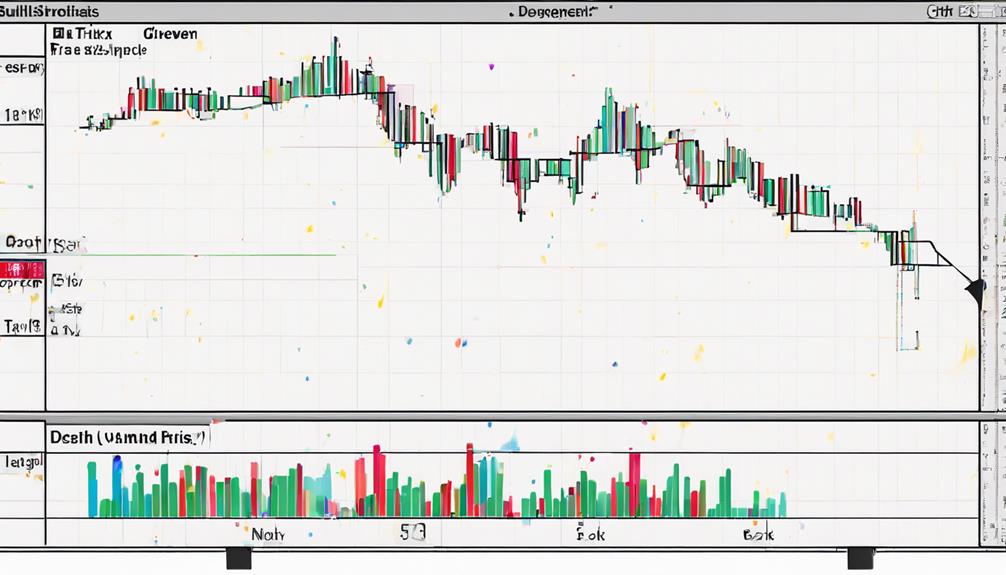
Interpreting signals from the TRIX indicator involves analyzing the rate of change of a triple exponential moving average to gauge momentum in the market. When interpreting TRIX indicator signals, traders should consider the following key points:
- Positive TRIX Values: Positive TRIX values indicate increasing momentum in the market, which could be interpreted as a bullish signal for potential price appreciation.
- TRIX Crossovers: TRIX crossovers with its signal line can provide valuable buy or sell signals. A TRIX line crossing above its signal line may indicate a bullish signal, suggesting a potential uptrend.
- Divergence Analysis: Divergence between price action and TRIX can be a powerful tool for identifying potential market reversals. Bearish divergence, where TRIX forms lower highs while prices form higher highs, could signal a reversal to the downside.
Utilizing TRIX for Market Analysis
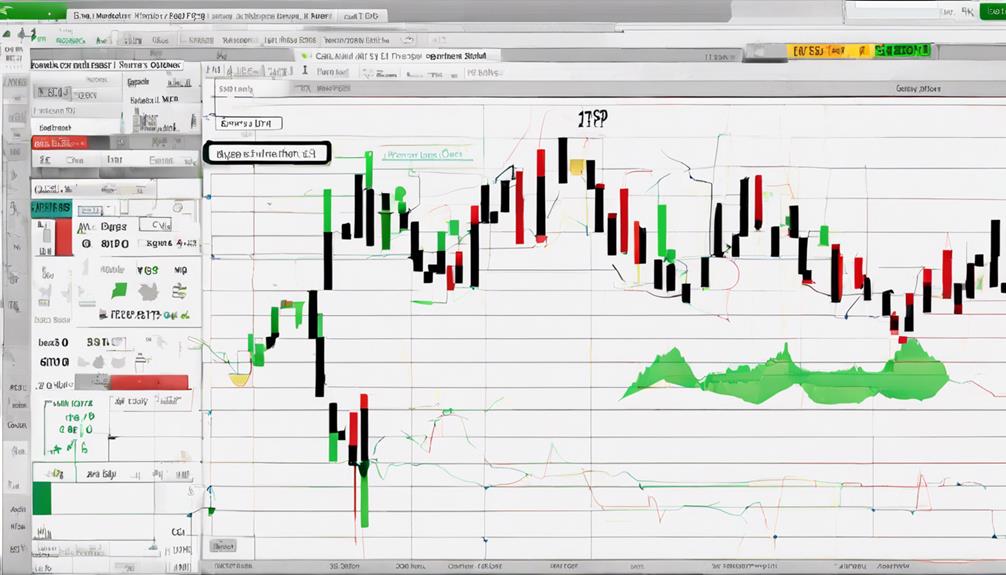
Moreover, utilizing the TRIX indicator in market analysis provides traders with a powerful tool to assess momentum and potential trend changes. The TRIX indicator's ability to measure the rate of change of a triple exponentially smoothed moving average allows traders to identify overbought and oversold conditions in the market.
When TRIX values are above zero, it suggests increasing momentum, while values below zero indicate decreasing momentum. By monitoring these levels, traders can anticipate potential trend reversals before they occur.
Additionally, divergence between price action and TRIX values can serve as a significant signal for traders looking to capitalize on market shifts. In addition, traders can enhance their market analysis by utilizing TRIX crossovers with signal lines to generate buy or sell signals at opportune moments.
Integrating TRIX With Other Indicators
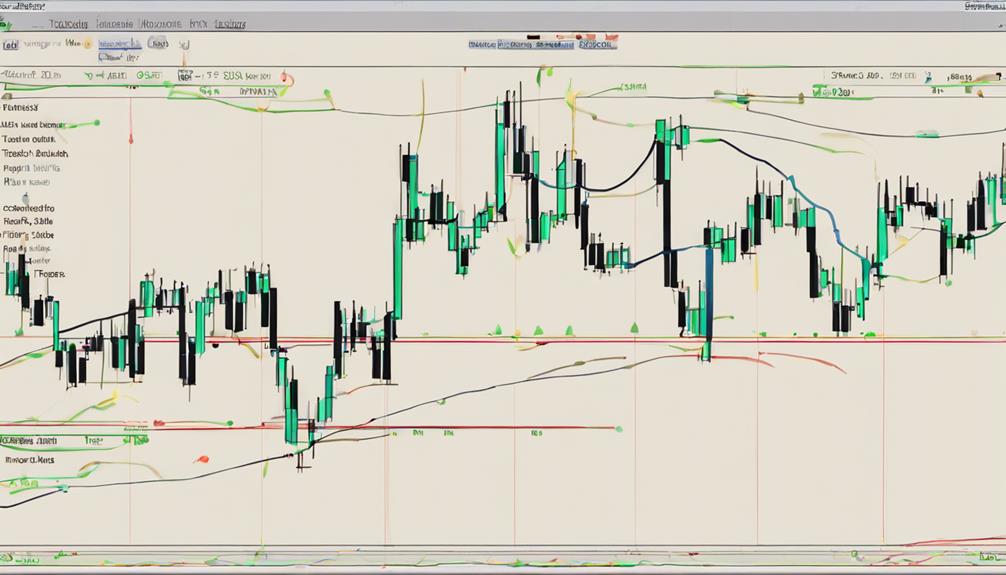
When combining TRIX with other indicators, such as RSI, traders can benefit from a more thorough analysis that may reveal potential divergence signals. This integration can offer insights into market dynamics and possible trend reversals, providing a more nuanced understanding of price movements.
TRIX Synergy With RSI
The integration of the TRIX indicator with the Relative Strength Index (RSI) offers traders a thorough approach to analyzing market conditions and enhancing trading strategies. This synergy between TRIX and RSI can provide traders with valuable insights into potential market movements. Here's how this integration can benefit your trading strategy:
- In-depth Analysis: By combining TRIX and RSI, traders can gain a more in-depth understanding of market dynamics.
- Confirmation of Trends: The integration helps confirm potential trend reversals or continuations, aiding traders in making informed decisions.
- Signal Filtering: TRIX can filter out false signals generated by RSI, improving the accuracy of trading signals and reducing risks associated with false alarms.
TRIX Divergence Signals
Integrating the TRIX indicator with other technical indicators enhances traders' ability to identify potential market reversals through divergence signals. When looking at bullish TRIX divergence, traders observe the price forming lower lows while the TRIX indicator makes higher lows, suggesting a possible uptrend.
This divergence signal indicates a shift in momentum, highlighting a buying opportunity. By combining TRIX with indicators like the Relative Strength Index (RSI), traders can further validate these signals. Divergences between the price chart and the TRIX indicator often precede significant price movements, offering traders a chance to enter or exit positions strategically.
Recognizing and acting upon bullish TRIX divergence can lead to improved trading outcomes and enhanced risk management strategies.
Implementing TRIX for Entry Points
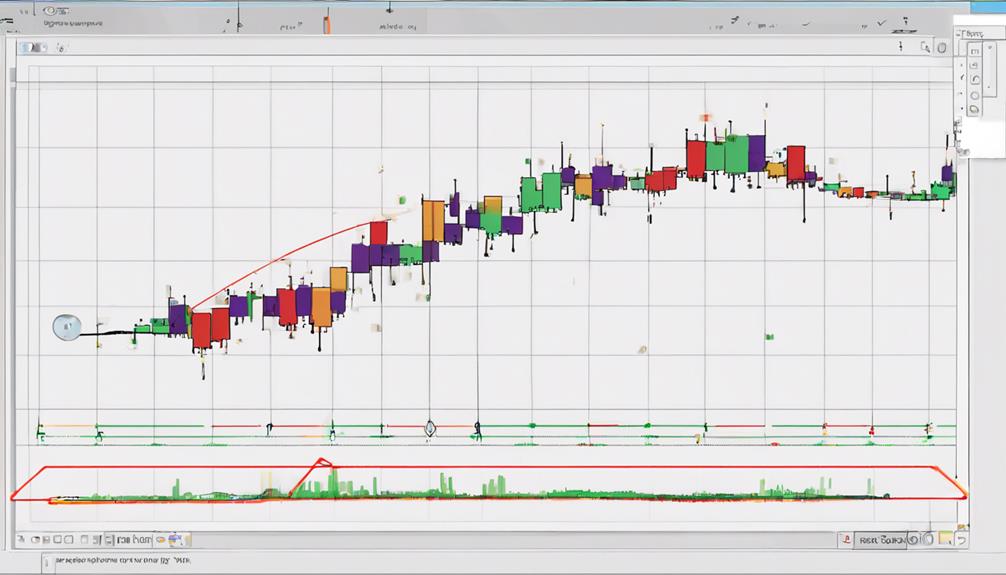
Implementing the TRIX indicator for entry points involves identifying key signals such as crossovers with the signal line. Traders often interpret TRIX moving above its signal line as a bullish entry opportunity, while a move below the signal line may be considered bearish.
Setting ideal parameters and combining TRIX signals with other technical tools can provide a robust framework for enhancing trading strategies.
Entry Signal Identification
Utilizing the TRIX indicator for entry signal identification in trading involves observing crossovers with the signal line to pinpoint potential buying or selling opportunities. When considering entry signals with TRIX, traders should focus on the following:
- Look for TRIX crossovers above the signal line for bullish entry points and below for bearish entry points.
- Waiting for confirmation of the crossover signal can help reduce false signals and increase entry reliability.
- Combining TRIX entry signals with other technical indicators, such as exponential moving averages, can enhance the accuracy of identifying entry points in trading.
Setting Optimal Parameter
To fine-tune the effectiveness of the TRIX indicator for entry points, traders must carefully select an ideal period length that aligns with their trading style and preferences. The commonly used period length for the TRIX indicator is 18 periods, but traders can experiment with different lengths to optimize the indicator for their specific strategy and time frames.
Maximizing Trading Performance With TRIX
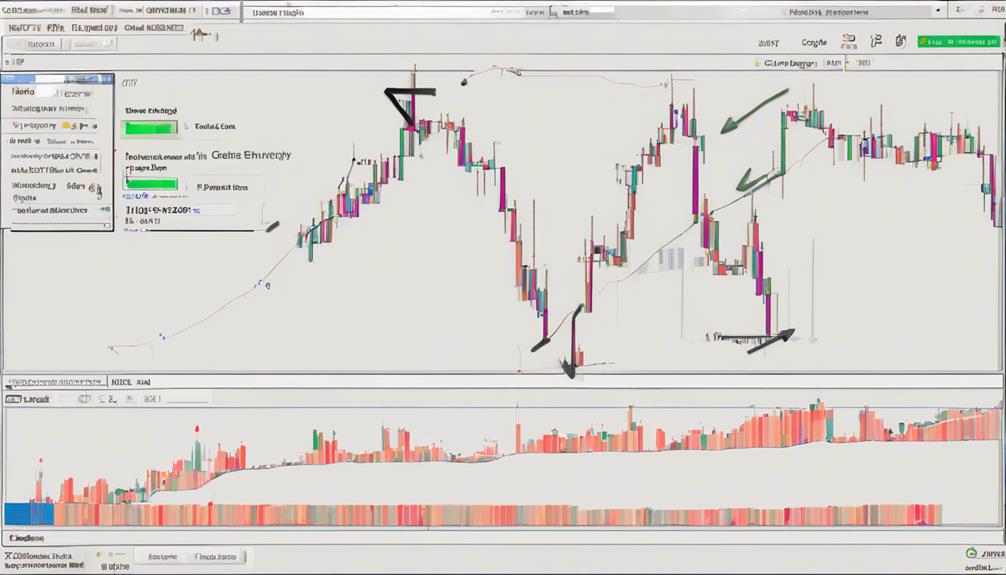
Enhancing trading performance through strategic utilization of the TRIX indicator involves a meticulous analysis of market trends and momentum. To maximize trading performance with TRIX, traders can consider the following:
- Implementing Dynamic Stop Losses: Utilize TRIX crossovers or divergences to adjust stop loss levels, ensuring protection against adverse market movements while allowing for potential profit maximization.
- Combining TRIX with Other Technical Indicators: Enhance trading signals by integrating TRIX with complementary indicators like moving averages or RSI to confirm entry and exit points, increasing the probability of successful trades.
- Adapting to Changing Market Conditions: Regularly review TRIX signals in conjunction with market developments to adapt trading strategies accordingly, staying nimble and responsive to evolving trends.
Frequently Asked Questions
How to Trade With TRIX Indicator?
When trading with the TRIX indicator, understanding its signals is essential.
Monitor the indicator's slope for buying or selling opportunities. Utilize the numerical values, particularly zero crossings, to identify bullish or bearish trends.
The TRIX indicator aids in pinpointing overbought and oversold market conditions, optimizing entry and exit points.
Integrate it with other technical indicators to fortify trading strategies. Mastery of the TRIX indicator enhances trading decisions based on market dynamics and trading psychology.
What Is the Best Setting for Trix?
The ideal parameters for the TRIX indicator depend on the trader's risk tolerance and desired signal frequency.
While the standard 18-period setting is commonly used, adjusting this parameter can have a notable impact on the indicator's responsiveness to market fluctuations.
Shorter periods offer more timely signals but may increase false alerts, while longer periods smooth out signals but might lag in trend identification.
Traders should experiment with different settings to align with their trading approach and objectives.
Is TRIX a Good Indicator?
The TRIX indicator is widely regarded as a reliable tool for analyzing market trends and momentum. By smoothing out price data, it assists traders in identifying significant changes in trend direction while filtering out short-term price fluctuations.
Traders often use TRIX to confirm the strength of existing trends or to pinpoint potential reversals. Its efficacy in providing valuable insights into market movements underscores its importance in traders' analytical frameworks.
How to Calculate Trix?
The process of calculating Trix, known as the Triple Exponential Moving Average (EMA), involves a complex formula that requires three stages of EMA calculations.
This sophisticated method smooths out price fluctuations and allows traders to analyze market trends more effectively.
Conclusion
To sum up, the TRIX indicator is a valuable tool for enhancing trading strategies.
By understanding its function, interpreting signals, utilizing it for market analysis, integrating it with other indicators, and implementing it for entry points, traders can maximize their performance.
By following these steps and incorporating TRIX into their trading approach, investors can achieve a more thorough and data-driven perspective on market trends, leading to more informed decision-making and potentially higher returns on investments.
